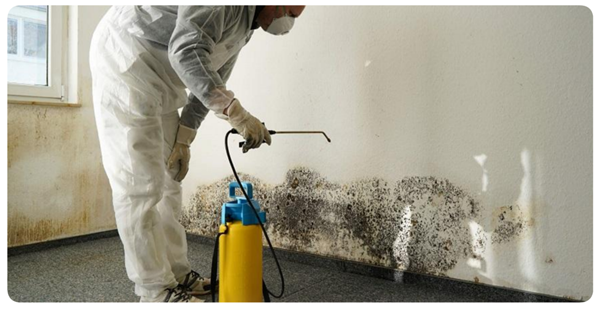Plasterboard Market Size, Report: 2024-2032
The global plasterboard market size stood at a value of more than USD 24.27 billion in 2023. The market is further expected to grow in the forecast period of 2024-2032 at a CAGR of around 5.3% to reach a value of over USD 38.57 billion by 2032. Plasterboards, also known as drywall, gypsum board, or wallboard, are essential components in modern construction. Their versatile applications in residential, commercial, and industrial sectors have made them a cornerstone in building materials. This blog post delves into the market dynamics, segmentation, regional analysis, and competitive landscape of the global plasterboard market, providing a comprehensive overview of its future trajectory.
Market Overview
The plasterboard market has witnessed significant growth due to rising construction activities globally, driven by urbanization and infrastructure development. Technological advancements and the development of innovative plasterboard products with enhanced properties, such as fire resistance, sound insulation, and moisture resistance, have further fueled market growth. Additionally, the increasing demand for sustainable and eco-friendly building materials has bolstered the adoption of plasterboards.
Market Segmentation
By Form
- Tapered-Edged: Preferred for seamless finishes in walls and ceilings, providing a smooth surface for painting and decorating.
- Square-Edged: Commonly used in residential construction for walls and ceilings, offering a versatile solution for various applications.
- Round-Edged: Often utilized in specialized architectural designs and decorative purposes.
- Bevelled-Edged: Used to create visual effects and enhance the aesthetics of interior spaces.
- Others: Includes other niche forms tailored for specific construction needs.
By Product Type
- Fire-Resistant: Designed to withstand high temperatures, these plasterboards are crucial for safety in commercial buildings and industrial facilities.
- Sound Insulation: Essential for reducing noise pollution, these boards are widely used in residential and commercial buildings to enhance acoustic comfort.
- Moisture-Resistant: Ideal for use in bathrooms, kitchens, and other areas exposed to moisture, preventing mold and mildew growth.
- Others: Includes specialty plasterboards with unique properties catering to specific requirements.
By End-User
- Residential: Dominates the market due to the high demand for plasterboards in home construction and renovation projects.
- Commercial: Significant growth is observed in this segment with the increasing construction of office spaces, shopping malls, and other commercial buildings.
- Industrial: Utilized in various industrial facilities for their durability and specific properties like fire resistance and sound insulation.
- Others: Encompasses other applications such as educational institutions, healthcare facilities, and public infrastructure projects.
Regional Analysis
North America
- Market size and key trends: North America holds a substantial share of the global plasterboard market due to robust construction activities and technological advancements in building materials.
- Major players and market share: Leading companies in the region include USG Corporation, Georgia-Pacific, and National Gypsum.
Europe
- Market size and key trends: Europe exhibits steady growth driven by stringent building regulations and a strong focus on sustainable construction practices.
- Major players and market share: Key players include Saint-Gobain, Knauf, and Etex Group.
Asia Pacific
- Market size and key trends: The Asia Pacific region is poised for rapid growth due to increasing urbanization, population growth, and rising construction spending.
- Major players and market share: Major contributors include Boral Limited, Yoshino Gypsum, and Beijing New Building Material (Group) Co., Ltd.
Latin America
- Market size and key trends: Growth in Latin America is supported by infrastructure development and government initiatives to boost the construction sector.
- Major players and market share: Prominent companies include Eternit and Gyplac SA.
Middle East and Africa
- Market size and key trends: The Middle East and Africa region experience growth due to large-scale construction projects and urban development initiatives.
- Major players and market share: Notable players include Gypsemna and Mada Gypsum.
Market Dynamics
Drivers
- Increasing construction activities worldwide
- Rising demand for sustainable and eco-friendly building materials
- Technological advancements and innovation in plasterboard products
Restraints
- Fluctuating raw material prices
- Environmental concerns related to gypsum mining
- Intense competition among market players
Opportunities
- Expansion in emerging markets
- Development of advanced plasterboard products with enhanced properties
- Increasing adoption of prefabricated construction techniques
Trends
- Growing emphasis on green building certifications
- Rising popularity of lightweight and high-strength plasterboards
- Integration of digital technologies in construction processes
Competitive Landscape
The global plasterboard market is highly competitive, with several key players striving to gain a larger market share through product innovation, strategic partnerships, and mergers and acquisitions. Leading companies include:
- Saint-Gobain: A major player with a strong focus on innovation and sustainability.
- USG Corporation: Known for its extensive product portfolio and robust distribution network.
- Knauf: A leading manufacturer emphasizing quality and customer satisfaction.
- Etex Group: Specializes in sustainable building materials and solutions.
- Boral Limited: Offers a wide range of plasterboard products catering to various end-user needs.
Future Outlook
The global plasterboard market is set to experience substantial growth, driven by increasing construction activities and the rising demand for sustainable building materials. The development of advanced plasterboard products with enhanced properties will open new avenues for market expansion. However, challenges such as fluctuating raw material prices and environmental concerns need to be addressed to ensure sustainable growth. Stakeholders should focus on innovation, strategic partnerships, and market expansion to capitalize on the emerging opportunities.



